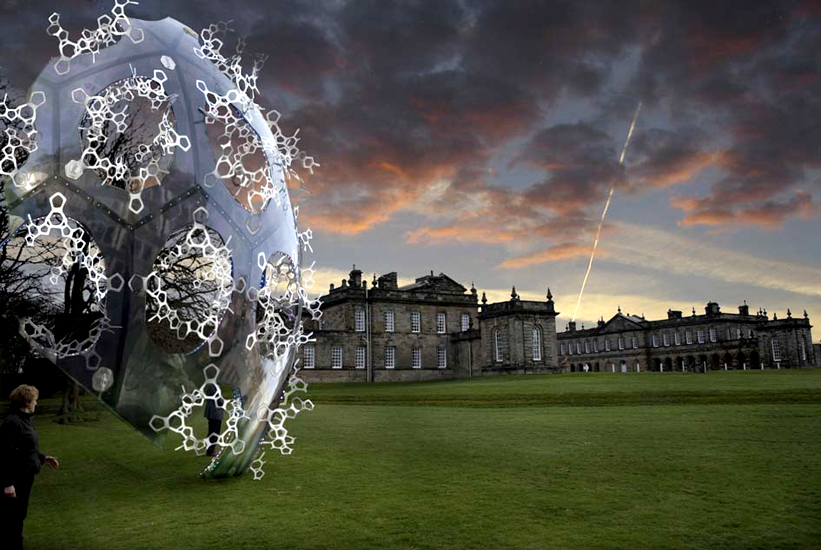
Mixing heritage with Hockney
The art phenomenon sweeping through England's country houses
If you keep half an eye on the English heritage world you might have noticed something a little different about some of our most revered historic properties this summer. Contemporary art, once the preserve of sterile white space galleries, has been blazing a trail through the parks and gardens, the drawing rooms and the outbuildings, of some of England’s finest stately houses.
At the forefront of the charge has been the National Trust, which this year rolled out Trust New Art, a programme held in partnership with Arts Council England. This has seen a host of contemporary installations at places such as Kedleston, in Derbyshire, where Susie MacMurray has created Promenade, a shimmering maze structure formed by thousands of golden threads spun between the pillars of the Great Hall. Another is Croft Castle, Worcestershire, which is the location for Tell it to the Trees (on show until 15 September), an exhibition of contemporary sculptural installations and paintings inspired by man’s relationship to trees.
Most prominently, Seaton Delaval, the house recently saved by the Trust from public sale after a massive publicity campaign, is the current resting place for CO2morrow, Marcos Lutyens and Alessandro Marianantoni’s installation commissioned by the Trust for the Royal Academy’s recent show Earth: Art of a Changing World. The structure’s curious shape is based on the zeolite molecule, which absorbs carbon dioxide and is used in industrial scrubbers in order to remove the gas from the air, and the work is programmed to emit different colours according to recorded levels of CO2 in the atmosphere. Previously clamped to the upper story of the RA like some giant alien limpet, its relocation to the grounds of Seaton Delaval is peculiarly fitting: from the earliest stages of the Industrial Revolution in the 18th century, the Delaval family were heavily involved with the coal mining industry. Today the grounds overlook a line of wind turbines, developed by one of the many new green technology companies who have clustered around the nearby town of Blyth.
Those in the know, of course, might have seen this coming. The record for the most long-running relationship between contemporary art and country house probably goes to privately-owned Harewood House, in Yorkshire, which has displayed works by David Hockney, Sophie Lascelles and Mark Wallinger - among many others - since its Terrace Gallery was first opened 21 years ago. The house is currently hosting ‘Twenty-One’ (until 19 September) an exhibition of works by leading artists created in response to the collections at Harewood House to celebrate the gallery’s coming of age. And since it was opened to the public in 2004 Compton Verney, which was purchased for the express purpose of displaying an art collection, has staged a series of successful contemporary art exhibitions featuring the likes of Bob and Roberta Smith and Wolfgang Tillmans. (In November the house will be debuting a new exhibition by contemporary Chinese photographer Kurt Tong).
And as for the precursors of Trust New Art, at Waddesden Manor, under the benevolent gaze of Jacob Rothschild the curatorial staff have seen a steady arrival of contemporary artworks in recent years, including Terra Degli Etruschi – Earth (or Ground) of the Etruscans, by Stephen Cox, and A Couple of Differences Between Thinking and Feeling, Angus Fairhurst’s bronze gorilla. Jeff Koons’ Cracked Egg (Blue) is currently on long loan to the house and nestling nicely among the green fronds in the conservatory. Until 31 October, visitors will be able to see works by the Campana brothers, both in a ‘formal’ exhibition in the Coach House (newly renovated for the purposes of using it for shows – a collection of portraits by Andy Warhol is next in line) and in situ in the Blue Dining Room. And this year’s Tatton Park Biennial (until 26 September), which truly laid the foundations for the programme, features specially-commissioned works by over 20 artists and is already a hot date on the contemporary art calendar since launching in 2008.
Susannah Glynn